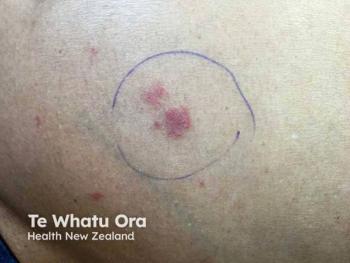
Patients With Moderate-to-Severe Atopic Dermatitis Experience Impaired QOL, Feel Disease Burden
A national study in Germany identified the baseline characteristics of patients with moderate-to-severe atopic dermatitis (AD) to understand how they are usually treated with Dupixent in the real world.
Patients with moderate-to-severe atopic dermatitis (AD) experience an impaired quality of life (QOL) and half of patients have co-existing type 2 inflammatory diseases, according to a study documenting the real-world effectiveness and safety of Dupixent (dupilumab).
Researchers in Germany conducted a national, multicenter, prospective, noninterventional study for the purposes of investigating the safety and effectiveness of Dupixent in the real-world setting. The PROLEAD study collected baseline characteristics of patients to understand how patients are usually treated with Dupixent in Germany.
The results, which only covered the baseline characteristics of patients, were
Moderate-to-severe AD is a chronic type 2 inflammatory disease and patients experience frequent disease flares with intense itch and a poor quality of life, the researchers explained. In Germany, only one-third of patients are treated by a specialist; as a result, patients with AD are undertreated and novel therapies, such as Dupixent are rarely prescribed.
The study included 817 patients with baseline data available across 126 sites throughout Germany. The mean age of patients was 43.4 years and 48.5% were female. The majority (66.6%) of patients received their AD diagnosis during childhood and 51.8% had co-existing atopic and type 2 inflammatory diseases.
Regarding burden of disease, the researchers found:
- A mean number of 6.1 patient-reported flares in the previous 12 months
- Mean number of 2.1 days spent in a hospital as an inpatient over the previous 24 months
- Half (50.7%) of patients said their disease “very”, “quite a bit” or “moderately” hampered their ability to practice their profession/their studies/their everyday school life
Nearly all (96.6%) of the patients had received topic treatments previously, 61.4% had received systemic therapy, and 51.3% had previously received ultraviolet/phototherapy. Only 38.6% of patients had never received any systemic therapy prior to receiving Dupixent.
For the 12 months prior to baseline, 43.6% of patients had received only a topic therapy. At baseline, moderate potent or potent topical corticosteroid were the most common treatment given at the same time as Dupixent. However, half (50.4%) of patients had not received any AD treatment with Dupixent at baseline.
The researchers noted that “the number of patients receiving topical and/or systemic treatments for AD decreased towards baseline, with approximately half then receiving dupilumab as monotherapy. Moreover, patients receiving dupilumab became less dependent on combination therapy with systemic and topical AD treatment over time.”
The common reasons to start Dupixent were that topical therapy alone was insufficient (95.1%) and the risk-benefit ratio (42.3%).
Most patients (62.9%) presented with severe AD at baseline and 27.7% had moderate AD. The researchers noted that in terms of skin lesions at baseline, the patients in the real world were “less severely affect by AD” compared with the patients in the pivotal phase 3 CHRONOS trial.
The disease-specific Dermatology Life Quality Index scores at baseline indicated a large impact on QOL and a high burden of AD among the patient population in PROLEAD, the authors noted.
“The results of the present and previous studies investigating dupilumab demonstrate the potential to improve management of moderate-to-severe AD,” they wrote.
Newsletter
Like what you’re reading? Subscribe to Dermatology Times for weekly updates on therapies, innovations, and real-world practice tips.


















